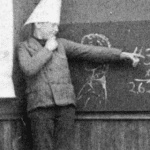
A passage that I extracted from Douglas Groothuis, Christian Apologetics: A Comprehensive Case for Biblical Faith [Downers Grove: IVP and Nottingham: Apollos, 2011], 335-336.
One society may stigmatize homosexuality while another condones it. And so on. Therefore, if different societies have made differing moral judgments (and if moral judgments depend inextricably on contingent cultures), then there can be no crosscultural and objective moral truths that apply to all cultures. What is moral is what is deemed “normal” by a culture; thus goodness is defined as normality. . . .
The diversity thesis runs aground for two compelling reasons. The first is that even if cultures disagree radically on their most basic and central moral judgments, this does not lead to the conclusion that these judgments are all equally acceptable and no moral judgment is better than any other. The proposition “There is widespread disagreement over X” does not logically imply, “Any assessment of X is true and legitimate for the group that proposes it.” Second, there is less diversity between cultures concerning fundamental human values than many imagine. Variations of the golden rule can be found throughout world history and amid various religions and ethical systems. (335)
At this point, he cites the late anthropologist Clyde Kluckhohn (1905-1960) as arguing for significant common ground on fundamental moral issues among disparate cultures:
Every culture has a concept of murder, distinguishing this from execution, killing in war, and other “justifiable homicides.” The notions of incest and other regulations regulations upon sexual behavior, the prohibitions upon untruth under defined circumstances, of restitution and reciprocity, of mutual obligations between parties and children — these and many other moral concepts are altogether universal. (cited at 335)
And then, on 335-336, he mentions C. S. Lewis’s familiar argument to the same effect in The Abolition of Man. Lewis surveyed basic moral precepts across various eras and cultures, finding what he chose to call the Tao and dividing it into eight categories:
- The law of general benevolence: (a) negative and (b) positive
- The law of special benevolence
- Duties to parents, elders, ancestors
- The law of justice: (a) sexual justice, (b) honesty, (c) justice in courts, etc.
- Duties to children and posterity
- The law of good faith and veracity
- The law of mercy
- The law of magnanimity.












